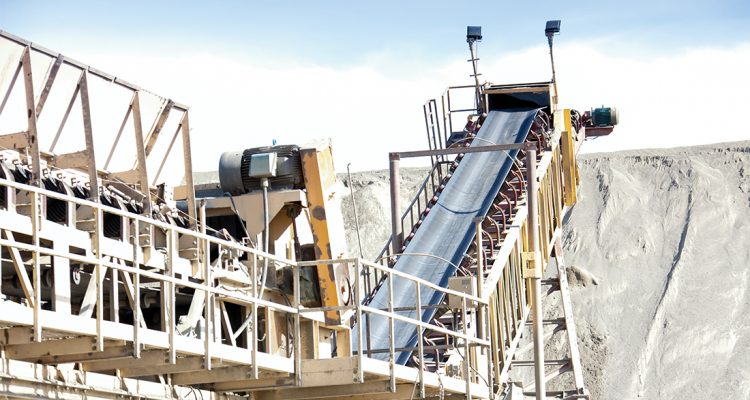The critical role that conveyors play across all industries is undisputed. Whether it’s in a factory or out at a mine, conveyors offer an efficient solution for moving products from one place to another.
Unfortunately, they are also one of the most dangerous pieces of equipment at an industrial work site, says Steve Hittmann, Motion’s category manager – Industrial Drive Systems and Mobile Final Drives.
“All conveyors have multiple nip and crush points with the capacity to pull operators or site personnel into the equipment, causing serious injury or even fatality,” Steve elaborates. “Even while under maintenance conditions, locked and isolated conveyors have the chance of moving and causing injury and should be mechanically clamped and held to prevent any movement.”
To expand further, Steve notes that conveyors are generally categorised into two major types – incline and horizontal. Both have inherent risks.
In regards to inclined conveyors – while these are often the smartest tool available for transporting products at a steady pace from point A to point B and overcoming the inertia of gravity – they pose a serious hazard if the motor stops or a conveyor belt has not been serviced or set up correctly. The weight of the goods on the belt can combine with gravity to reverse the motion of the belt and fling the product it’s carrying back down the slope.
“Uncontrolled loads from an incline conveyor can cause serious operator or personnel safety issues causing the conveyor to run backward with the potential for many tonnes of product falling or spilling from the conveyor while the load is not controlled,” says Steve. “This can put operators in serious danger of being crushed.”
Conversely, horizontal conveyors pose a similar safety risk to operators and personnel, but by running forward.
“A horizontal conveyor creates a load with inertia which when uncontrolled can continue to run forward with the potential for many tonnes of product falling or spilling from the conveyor while the load is not controlled,” explains Steve.
It’s for this reason conveyor belts are required by law to have backstops and anti-roll back technology installed in order to be approved for use.
While conveyor braking and emergency stop systems are governed by Australian Standard AS1755-2000 (1971), the implementation of this standard appears to differ across the country.
Steve says when in doubt, operators should aim high.
“There seems to be growing confusion around the different types of stopping mechanisms applied to ensure conveyors meet legal design requirements and are safe to operate,” he says.
“Regulatory bodies across Australia differ in their approach to what is required, and it would be my suggestion for all operators to ensure their equipment meets not only the regulations required but also ensures the safety of their workers. Both Queensland and New South Wales require compliance with Australian Standard 1755 as a legal requirement, while in Western Australia the requirements differ to some degree.”
Whether it’s incline conveyor or a horizontal conveyor system, a lack of emergency braking can also have costly side effects.
“From a production perspective the cost of flooding a system with uncontrolled product can be an expensive fix,” he says.
On the positive side, these accidents are avoidable, with a range of products on the market specifically designed to prevent conveyor belts from rolling unhindered.
The stopping options most used by industry fit into two main categories.
• A Negative Brake (power on, brake off/power off, brake on) which generally provides important safety protection for operators. It uses isolation lanyards to trip the conveyor in an emergency or when servicing the conveyor.
• A Backstop, Anti-Roll Back or Sprag Clutch Bearing which ensures that any loss of power to the drive or stopping while fully loaded will mechanically hold the conveyor load. Importantly – this device must be rated to exceed the actual driven power of the belt.
Hittmann says any conveyor system should be fitted with a negative brake unit to ensure the safety of all operators and site personnel.
Additionally, he says any incline conveyor must have a backstop, anti-roll back or sprag clutch bearing within the conveyor drive system. The backstop for the incline drive may be externally mounted to the conveyor drum shaft, or internally positioned within the drive reducer.
A solution that Motion customers can access and rely on is the Rexnord Falk True Hold Low Speed Backstops solution.
“Many of our customers trust the Rexnord brand and for good reason – the design, engineering and manufacturing of their drive packages are excellent,” says Steve. “Rexnord Falk True Hold Low Speed Backstops is an instant-response, no slip solution that can increase the safety and reliability of equipment by preventing reverse rotations.”
Moreover, Steve notes that the customers can choose from a range of package options depending on whether the drive is in a single, tandem, or multiple backstop configuration.

